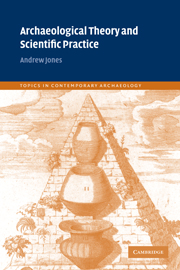Book contents
- Frontmatter
- Contents
- List of illustrations
- List of tables
- Preface
- Acknowledgements
- 1 The archaeology of ‘two cultures’
- 2 Science as culture: creating interpretative networks
- 3 Archaeology observed
- 4 Materials science and material culture: practice, scale and narrative
- 5 Material culture and materials science: a biography of things
- 6 A biography of ceramics in Neolithic Orkney
- 7 Making people and things in the Neolithic: pots, food and history
- 8 Before and after science
- References
- Index
4 - Materials science and material culture: practice, scale and narrative
Published online by Cambridge University Press: 06 November 2009
- Frontmatter
- Contents
- List of illustrations
- List of tables
- Preface
- Acknowledgements
- 1 The archaeology of ‘two cultures’
- 2 Science as culture: creating interpretative networks
- 3 Archaeology observed
- 4 Materials science and material culture: practice, scale and narrative
- 5 Material culture and materials science: a biography of things
- 6 A biography of ceramics in Neolithic Orkney
- 7 Making people and things in the Neolithic: pots, food and history
- 8 Before and after science
- References
- Index
Summary
In the account I have provided so far, science has been represented as a somewhat monolithic entity. However, if we consider scientific practice to have a critical effect on the kinds of knowledge generated, then it follows that different sciences engender quite distinct cultural practices and produce distinct forms of knowledge (Knorr-Certina 1999). This means that we cannot assume the existence of a unified laboratory-based practice known as ‘archaeological science’ that unites archaeobotanists, zooarchaeologists, soil micromorphologists, ceramic petrologists, etc. Within the next two chapters, I will set aside other areas of archaeological science in order to focus on the practice of materials science – the study of archaeological materials using techniques derived from engineering, chemistry and physics (Kingery 1996). In taking this step, I do not wish to present a further divisive view of archaeological practice; rather, I want to examine how we might re-orientate materials science analysis in terms of the wider goals of interpretative archaeology. In order to undertake this task I will focus on the interface between these branches of archaeology (see Renfrew 1982).
Hand in hand with the creation of the archaeological laboratory we observe the conceptual transformation of the physical traces of the site (both artefactual and environmental) as they become the focus of objective scientific analysis. In order to re-contextualise artefactual and environmental samples within a historically and culturally meaningful framework, I advocated a mode of enquiry that takes account of both context and content, both the physical dimensions of artefacts and environmental samples and their cultural and historical dimensions.
- Type
- Chapter
- Information
- Archaeological Theory and Scientific Practice , pp. 63 - 82Publisher: Cambridge University PressPrint publication year: 2001



